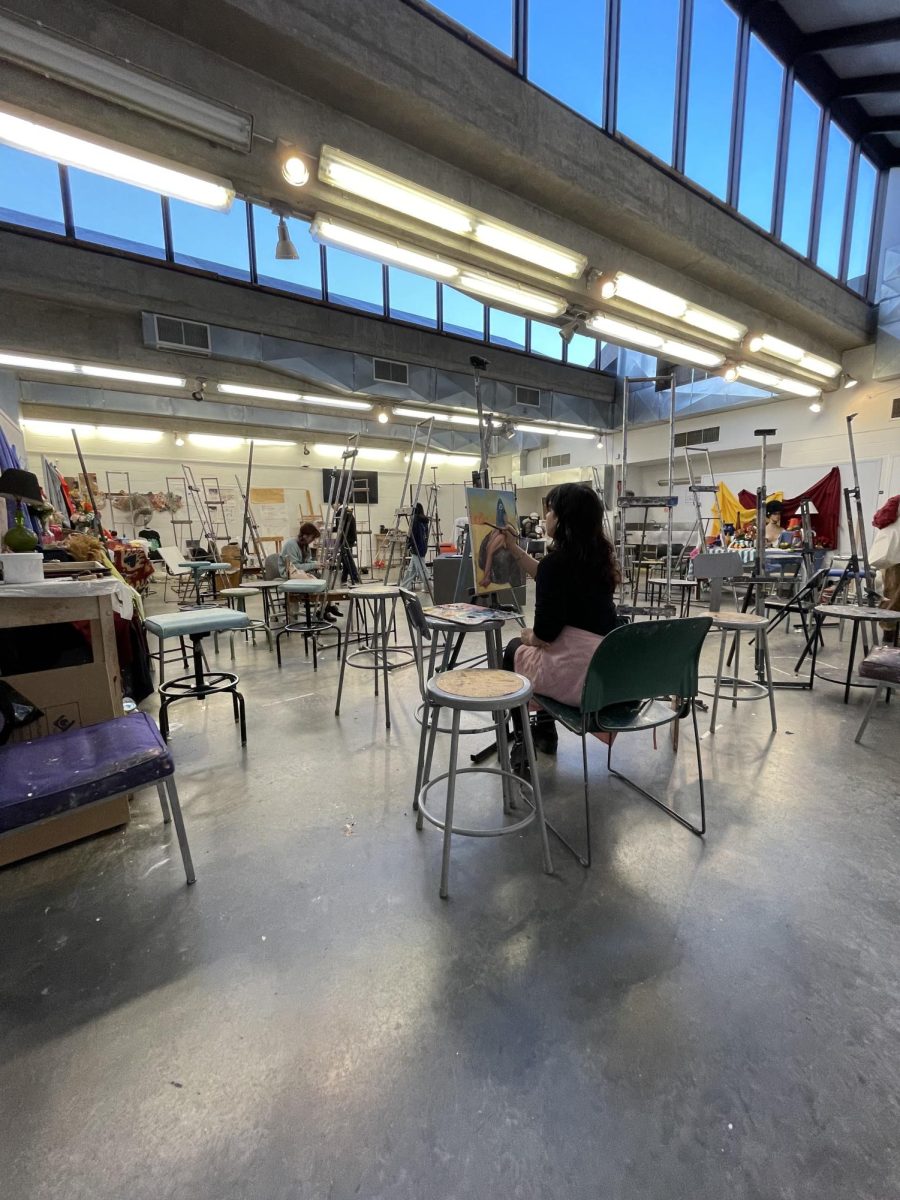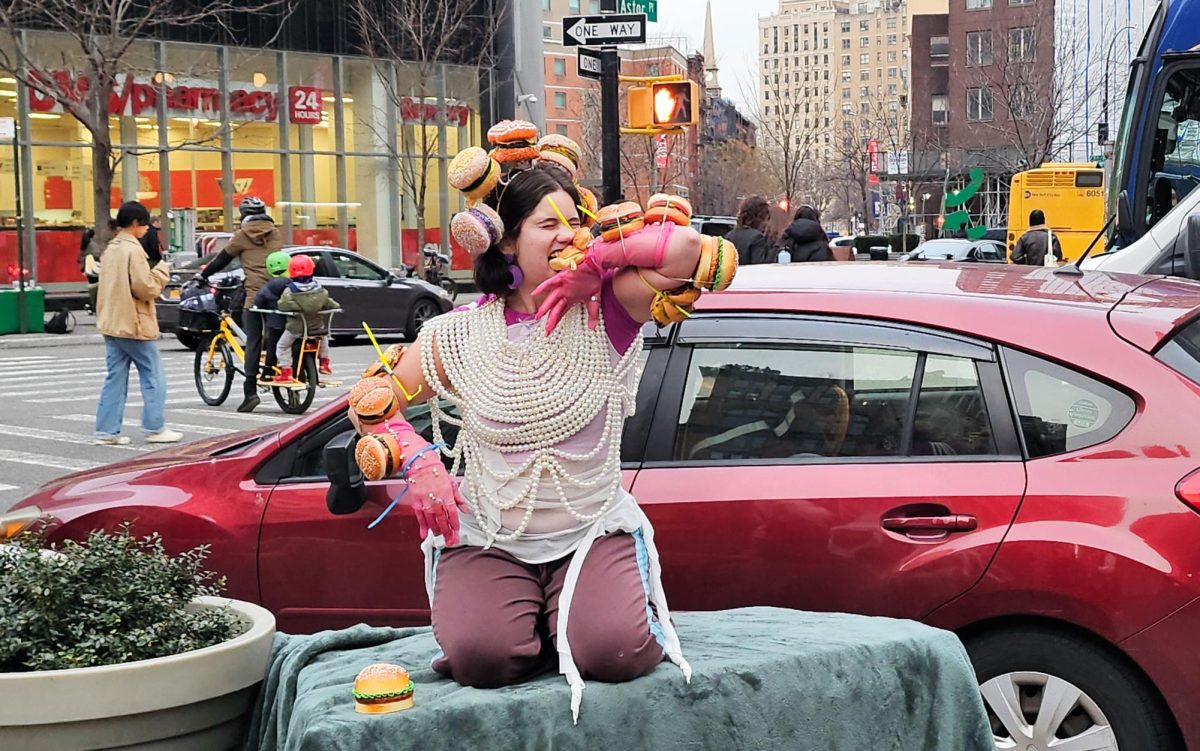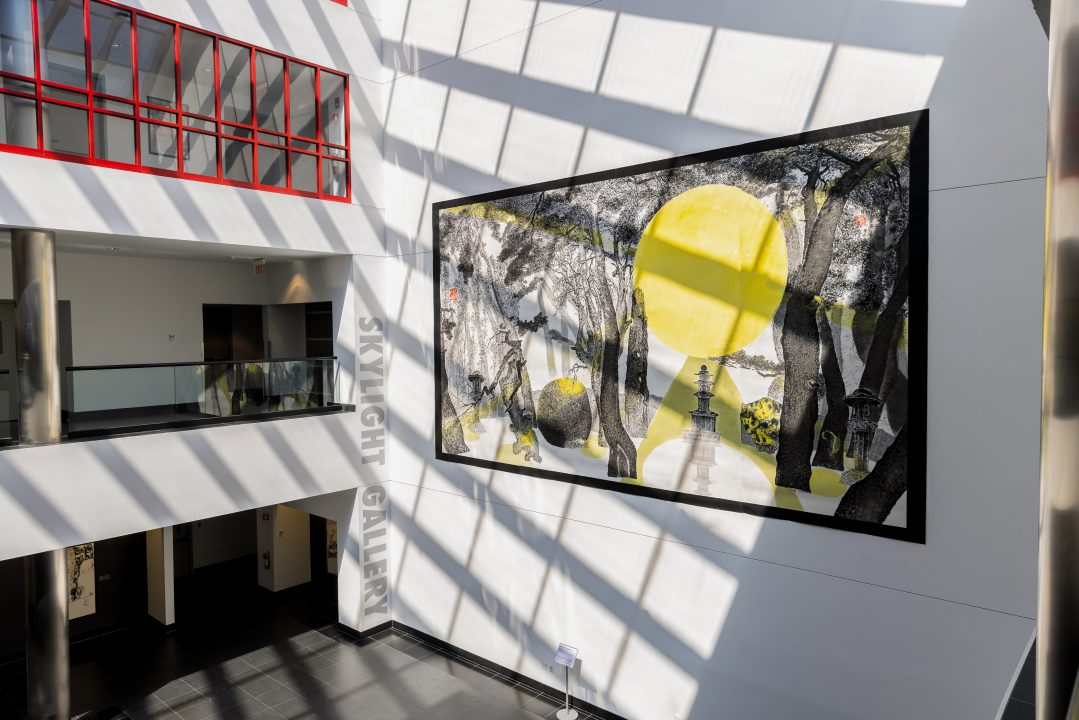
The Japan Center at Stony Brook sponsored Dr. Andrew Campana, assistant professor of modern and contemporary Japanese literature and media at Cornell University, to speak on Japanese poetry in the digital age through his work on Nov. 16. It was centered around bringing lost experimental work on the early internet to greater recognition.
In Campana’s first book, “Expanding Verse: Japanese Poetry at Media’s Edge,” he explores Japanese poets’ engagement with a diverse array of technologies from the 1920s to the present. As tape recording, film, television, the internet and augmented reality were invented and took hold in society, recovering literary contributions became a pertinent issue, as scholars began taking note of the ease with which platforms and creators disappeared as websites and applications became defunct.
Over the hour, Campana introduced his audience to nine different poems, ranging from computer-generated verses to stanzas on multilingual game websites to augmented reality apps where users see poems appear superimposed over the landscape. He began with the poem “Chopsticks” by Shinonome Nodoka, a nonsensical amalgamation of phrases and words appropriated from poets’ works.
What was not immediately apparent to the audience, though, was the fact that Nodoka’s work had been generated through his JavaScript program written in 2012, “Contemporary Japanese Poetry Generator,” a tool that produces parodies of Japanese poetry.
The widespread adoption of the internet by Japanese poets in the 1990s and early 2000s belied projects such as “Internet Love,” the 2001 poetry collection by Hamasaki Masae, which is an unusual example of a print poetry collection about digitality, subverting boundaries between the online and offline processes of existing and writing. Masae is a largely unknown poet and nursery school teacher. Her collection contains a cycle of 50 short love poems.
“I want to think about a type of experimentation that is often ignored because it is not like other forms of experimental poetry,” Campana said.
The location of poetry spawned in unlikely places, such as a Japanese Neopets website that was the host platform for thousands of multilingual poems. Neopets are virtual pets that users can play digital games with.
The phenomenon of a large repository of poetry largely by young women and girls on a gaming site “is an example of communities of practice that tend to be ignored in accounts of internet history,” Campana said.
For example, the 2005 poem “Shoyru, I Want to Meet You” by meniydaichuki illustrates the desire to have a more dynamic, reciprocal relationship with a Neopet, resulting in emotions of pleasure associated with the digital-reality divide. By contrast, Yamada Ryota’s work ranges from a 50-page poem created from the search results of its title, “Obama Google,” to expansive streams of consciousness compiled from Wikipedia entries.
Japan’s unique status of having a particularly early onset of the internet drove technology and poetry fusions. The first computer-generated haiku was generated in 1960, and cell phone internet service began as early as 1999.
As Mark Steinberg writes in his book “The Platform Economy: How Japan Transformed the Consumer Internet,” Japan’s internet provided a global blueprint for the internet worldwide. Tokyo-based poet ni_ka was initially best known for her monitashi, or monitor poems. Her poems are in the form of blog posts, interwoven with hundreds of animated images, and inspired by the cutting-edge online use by teenage girls — essential to the creation of emojis. However, the lack of recognition of their blog posts as either poems or art despite their innovative form originates in the characterization of feminine things as girlish, frivolous and non-technical.
As the inventor of the AR, or augmented reality poem, ni_ka used the Sakai camera to overlay real locations with audio and video clips. In response to the March 11, 2011 tsunami and earthquake — the strongest natural disaster in Japan’s history — which caused the loss of several of ni_ka’s family members, few of whose bodies could be recovered, a longer sense of unreality underlies her work.
“To ni_ka, augmented reality is not just augmented reality,” Campana said. “It is a poetic suspension of contradicting overlay that contributes to a sense of extended distance.”
In “Hallelujah,” ni_ka’s 2012 work of monitor poetry, every page has animated graphics of flowers, hearts and more which obscures the screen.
“The colours of the flowers were a representation of the colours of life,” ni_ka said in an interview in “Mita Bungaku.” “But having already been plucked, they were also embodiments of death. There seemed to be suspended there something like an ephemeral Augmented Reality, a poetic sensation of aliveness and death.”
Her work “Poetr-i Float Towards March 11th, 2011– From Tokyo” superimposes phrases over everyday objects and scenery, symbolizing the impossibility of expression and asking readers to travel to certain places as an anti-commercialist usage of the AR application.
Campana’s work also explores issues of disability and media, as with the deaf poet Tanada Shigeru’s practice of sign language poetry. The internet has allowed sign language literature to be distributed widely, resulting in poems often being put in a position where they are available to those who do not speak sign language.
Many deaf poets took a different approach to the online process, which Campana was attracted to, as he wishes to “[take] seriously works that challenge normative approaches to writing … and point to other worlds that media and poetry can become.”
The gradual decay of availability within the world of innovative online poetry has progressed across the platforms that Campana studies. For example, as Neopets Japan stopped updating in 2008, the company promised to finish their migration to HTML by then, which was not completed. Shinonome’s poetry generator vanished, and the app ni_ka used to create her AR poems was shut down after only a few years of existence, along with her “Hallelujah” blog.
“My AR poetry, quietly drifts from now on, only in the limits of memory and record,” Campana said, quoting ni_ka.
The freedom entailed by poetry conveys a spirit of experimentation beyond other forms of writing, and the rise of artificial intelligence, or AI, generators introduces ethical questions about the relationship between real art and generated art. “Recently, there has been a moral question concerning AI-generated art vs. human-drawn art, in how AI-generated art is a compilation of others arts’ being put together, and how it might get more recognition despite its comparative “lack of effort,” Maicey-Chrystel Ocampo said.
For Campana, generated poetry makes available lines of thought beyond human handwritten poetry by introducing questions such as, “How was the generator set up? What tools do they use to generate those structures?” Over time, digital technologies have redefined human relationships with friends and family, and poets have made societal structures visible, which makes them questionable and possible for individuals to push back against them.
Luckily, the culture of analyzing disappearing digital media has continued to expand, as with new trends of lost media communities such as those on YouTube finding lost documentaries and media from the 80s and 90s, with whom scholars such as Campana feel a sense of unity.
“It feels like trying to escape a burning building, everything is disappearing so quickly,” Campana said. “The internet was very different 12 years ago and it will be very different twelve years from now.”















